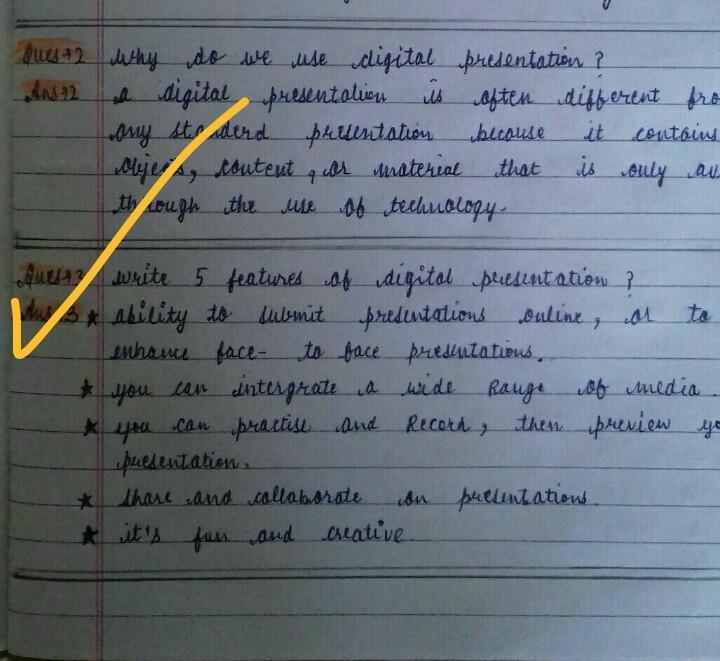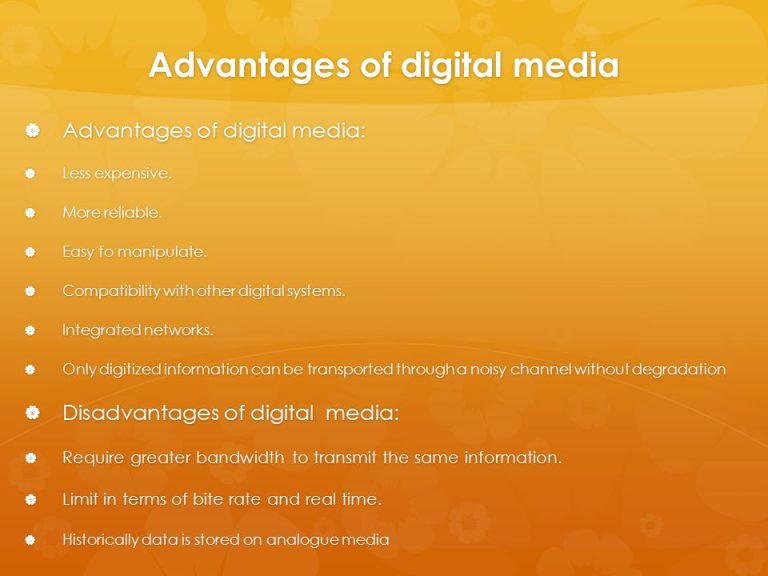What are the Basic Steps to Deliver a Successful Presentation?
Delivering a successful presentation involves knowing your audience, developing your idea, planning your presentation, and creating effective visual aids. These four basic steps will help you engage and captivate your audience while effectively conveying your message.
By understanding your audience’s needs and preferences, you can tailor your presentation to resonate with them. Developing a clear idea and starting at the end will guide your content and structure. Planning your presentation away from a computer allows you to focus on the overarching message and flow.
Lastly, using visually appealing and concise visual aids will enhance your presentation and keep your audience engaged. Follow these steps to deliver a successful presentation that leaves a lasting impact.
Step 1: Know Your Audience
In order to deliver a successful presentation, it is important to know your audience. By understanding their needs, preferences, and interests, you can tailor your content and delivery to captivate and engage them effectively.
Understanding your audience’s needs and expectations is crucial for delivering a successful presentation. By tailoring your content specifically to their interests and preferences, you can ensure that your message resonates with them effectively. Here are the key components of this step:
- Research demographics: Gain insights into your audience’s age range, gender, educational background, and any other relevant information. This will help you understand their perspectives and customize your presentation accordingly.
- Tailor your presentation: Use the information you gathered during your research to adapt your content to the preferences of your audience. Consider their level of familiarity with the topic, their motivations, and what they hope to gain from your presentation.
- Create a persona: Develop a fictional representation of your typical audience member – a persona. This will allow you to better connect with your audience and tailor your presentation to their specific needs. Think about their goals, challenges, and aspirations, and address them directly in your content.
Remember, knowing your audience is the first step toward delivering a successful presentation. By understanding their needs and expectations, conducting thorough research, and creating a persona, you can ensure that your message resonates with your audience and leaves a lasting impact.
References:
- [Ways to Customize Your Presentation for Different Audiences](https: //blog.slideshare.net/2019/01/04/customize-presentation-audiences)
- [The Importance of Knowing Your Audience](https: //www.hawaii.edu/mauispeech/html/knowaud.html)
Step 2: Develop Your Idea
In order to deliver a successful presentation, it is important to follow the basic steps. Step 2 involves developing your idea by starting at the end and planning your presentation away from your computer. This helps create a strong and impactful presentation.
Start with a clear objective in mind:
- Determine the purpose of your presentation.
- Define what you want to achieve by the end of the presentation.
- Have a clear understanding of the key takeaways you want your audience to have.
Define your key message and main points:
- Identify the main idea or message that you want to convey.
- Break down your message into key points that support your main idea.
- Ensure that your main points are relevant, concise, and easy to understand.
Structure your presentation in a logical and cohesive manner:
- Create an outline or structure for your presentation.
- Arrange your main points in a logical sequence that flows smoothly.
- Use transitional phrases or signposts to guide your audience through different sections of your presentation.
Remember, developing your idea is a crucial step in delivering a successful presentation. By starting with a clear objective, defining your key message and main points, and structuring your presentation effectively, you can ensure that your ideas are communicated effectively and resonate with your audience.
Step 3: Plan Your Presentation
When it comes to delivering a successful presentation, planning is key. Step 3 involves carefully crafting your presentation, focusing on creating engaging content and minimizing the use of text in your visual aids. By following these basic steps, you can ensure a successful and impactful presentation.
To deliver a successful presentation, it is crucial to plan and organize your content effectively. Planning not only helps you stay focused but also ensures that your message is clear and engaging. Here are the basic steps to plan a presentation:
- Step away from your computer and brainstorm ideas:
- Find a quiet space where you can think creatively without distractions.
- Use a whiteboard or a piece of paper to jot down your ideas.
- Consider your audience’s needs and interests while brainstorming.
- Outline your content and create a storyboard:
- Start by organizing your ideas into main points or sections.
- Create a logical flow for your presentation to maintain cohesiveness.
- Use bullet points or numbered lists to structure your content.
- Ensure that each point supports your overall message.
- Determine the appropriate length and timing for each section:
- Consider the time allotted for your presentation and divide it accordingly.
- Be mindful of how much information you can cover within the given timeframe.
- Allocate more time for important points or sections that require further explanation.
- Practice your presentation to ensure you can deliver it within the desired timeframe.
Planning your presentation in advance allows you to streamline your content, establish a clear structure, and create a presentation that effectively delivers your message. By following these steps, you can ensure that your presentation is well-organized, engaging, and tailored to your audience’s needs.
Step 4: Create Visual Aids
Step 4: Create Visual Aids. Enhance your presentation with compelling visual aids that support your main points and keep text to a minimum. Visuals such as graphs, charts, and images can help engage your audience and make your presentation more impactful.
Use visuals to enhance understanding and engagement:
- Visual aids are essential elements of a successful presentation as they help grab the audience’s attention and enhance their understanding of the content.
- Incorporating impactful images can make your presentation more visually appealing and memorable.
- Using charts, graphs, and diagrams is an effective way to convey complex data and statistics in a clear and concise manner.
- Visual aids provide visual representation of information, making it easier for the audience to digest and retain the key points of your presentation.
Remember the following tips when creating visual aids:
- Keep text to a minimum and let the images speak for themselves.
- Use high-quality and relevant images that are directly related to your presentation topic.
- Avoid cluttering your slides with too much information or irrelevant visuals.
- Ensure that the visuals you choose are easy to understand and align with the overall message you want to convey.
- Use colors and fonts that are visually appealing and create a cohesive look throughout your presentation.
- Consider using animations or interactive elements to make your visual aids more engaging and dynamic.
By following these guidelines, you can create visually appealing and informative aids that will captivate your audience and enhance the overall impact of your presentation.
Remember, when it comes to creating visual aids for your presentation, less is more. Focus on impactful and relevant visuals that convey your message effectively and engage your audience. Utilize charts, graphs, and diagrams to present data and statistics in a visually appealing way.
By keeping text to a minimum and using strong visuals, you can enhance understanding and maintain the attention of your audience throughout your presentation.
Step 5: Rehearse
Step 5: Rehearse. Practice your presentation to ensure a successful delivery. Familiarize yourself with the content, timing, and delivery style to engage your audience effectively.
Practicing your presentation multiple times will help you feel more confident and prepared. Here are some key points to keep in mind:
- Practice your presentation multiple times: Rehearsing your presentation ensures that you are familiar with the content and flow. It helps you become more comfortable with the material and reduces the chances of any unexpected mistakes.
- Pay attention to your body language and delivery: As you practice, pay close attention to your body language, including your posture, gestures, and facial expressions. Practice maintaining eye contact with the audience and using appropriate vocal tone and volume. This will enhance your overall delivery and make your presentation more engaging.
- Seek feedback and make necessary improvements: Consider rehearsing in front of a trusted friend or colleague and ask for their feedback. They can provide valuable insights on areas where you can improve, such as pacing, clarity, and transitions. Use this feedback to make necessary adjustments and enhance the quality of your presentation.
By dedicating time to rehearse and paying attention to your body language and delivery, you can deliver a successful presentation that captivates your audience and effectively delivers your message.

Credit: hbr.org
Step 6: Engage Your Audience
In Step 6 of delivering a successful presentation, it is important to engage your audience by using effective communication techniques, such as body language and eye contact, and by actively involving them through interactive activities or asking questions. By keeping your audience engaged, you can ensure that your message is effectively delivered and received.
To deliver a successful presentation, it is crucial to engage your audience and create an interactive environment. This step involves using techniques that involve the audience, encouraging their participation, and tailoring your presentation to address their interests and concerns.
Use Interactive Techniques To Involve Your Audience:
- Utilize multimedia: Incorporate visual aids, such as videos, images, or slides, to captivate your audience’s attention and stimulate their interest.
- Live polls or surveys: Incorporate real-time polling or surveys to gather feedback and involve the audience in the discussion.
- Group activities: Divide your audience into smaller groups and assign them tasks or discussions related to your presentation topic.
Encourage Participation Through Questions And Discussions:
- Ask thought-provoking questions: Pose questions that encourage critical thinking and invite the audience to share their insights or opinions.
- Foster open discussions: Create a safe and inclusive space for participants to engage in open discussions, allowing for the exchange of ideas and collective learning.
Tailor Your Presentation To Address Audience Interests And Concerns:
- Research your audience: Prior to your presentation, gather information about your audience’s demographics, interests, and needs. This will help you tailor your content to resonate with them.
- Address their pain points: Identify the challenges or concerns your audience may have and make sure to address them in your presentation. This shows that you understand their needs and are providing valuable solutions or insights.
Remember, the key to engaging your audience is to make your presentation interactive, encourage their participation, and deliver content that is relevant and meaningful to them. By doing so, you can create a memorable and impactful experience for your audience.
Step 7: Deliver With Confidence
Step 7: Deliver with Confidence. To deliver a successful presentation, it’s important to have confidence in your delivery. Engage your audience, use effective body language, and practice your presentation beforehand to ensure a powerful and engaging delivery.
When it comes to delivering a successful presentation, confidence plays a crucial role in engaging your audience and leaving a lasting impression. To ensure you deliver with confidence, follow these essential steps:
Manage Your Nerves And Project Confidence:
- Take deep breaths to calm your nerves before starting the presentation.
- Practice mindfulness techniques, such as visualization or positive affirmations, to boost your confidence.
- Stand tall with good posture and maintain a relaxed body language throughout the presentation.
- Remind yourself of your expertise and knowledge on the topic, which will help build your confidence.
Speak Clearly And At An Appropriate Pace:
- Articulate your words clearly, ensuring the audience can understand your message.
- Avoid speaking too fast, as it may make it difficult for the audience to follow along.
- Use pauses effectively to emphasize important points and allow the audience to digest the information.
Maintain Eye Contact With Your Audience:
- Make eye contact with different individuals in the audience to create a connection.
- Avoid continuously staring at your notes or slides; instead, engage with the audience.
- Eye contact shows confidence and helps to establish trust and credibility with your listeners.
Remember, delivering a presentation with confidence takes practice and experience. By managing your nerves, speaking clearly, and maintaining eye contact, you can effectively engage your audience and deliver a successful presentation.
Frequently Asked Questions On What Are The Basic Steps To Deliver A Successful Presentation?
What Are 7 Basic Steps To Deliver Successful Presentation?
Here are the 7 basic steps to deliver a successful presentation: 1. Know your audience and create a persona. 2. Develop your idea and start at the end. 3. Plan your presentation and step away from your computer. 4. Create visually appealing aids and keep text to a minimum.
5. Practice your presentation to build confidence. 6. Engage your audience during the presentation. 7. Close your presentation with a memorable conclusion. These steps will help you deliver an engaging and impactful presentation.
What Are 5 Basic Things To Know For Delivering A Successful Presentation?
To deliver a successful presentation, here are 5 basic things you should know: 1. Have good posture and appear relaxed. 2. Maintain eye contact with your audience instead of reading from your notes. 3. Avoid distracting behaviors, such as chewing gum or fidgeting.
4. Watch for signs of nervousness and work to overcome them. 5. Practice and prepare your presentation beforehand to ensure a smooth delivery.
What Are The 5 Basic Steps Of Presentation?
The 5 basic steps of a presentation are: 1. Prepare your content. 2. Create attention-grabbing opening. 3. Engage your audience throughout the presentation. 4. Use visual aids effectively. 5. Close with a strong conclusion.
What Are The 3 Most Important Steps When Delivering A Presentation?
To deliver a successful presentation, follow these three important steps: 1. Plan your presentation: Outline your main points, organize your thoughts, and create a clear structure for your presentation. 2. Practice and rehearse: Familiarize yourself with your content, practice speaking, and time your presentation to ensure it fits within the allotted time.
3. Engage your audience: Use eye contact, body language, and interactive elements to connect with your audience and keep them engaged throughout your presentation.
Conclusion
Delivering a successful presentation is a skill that can be mastered with practice and preparation. By following a few basic steps, you can captivate your audience and leave a lasting impression. First, it is crucial to know your audience and tailor your presentation to their specific needs and interests.
By creating a persona and understanding their expectations, you can deliver a presentation that resonates with them. Next, start your presentation with an attention-grabbing opener to capture the audience’s attention from the start. Utilizing props can also enhance your presentation and make it more engaging.
Remember to plan your presentation carefully and use a storytelling structure to convey your message effectively. Finally, closing your presentation with a strong conclusion will leave a lasting impact on your audience. By incorporating these steps into your presentation process, you can deliver a successful and memorable presentation that will keep your audience engaged from start to finish.





